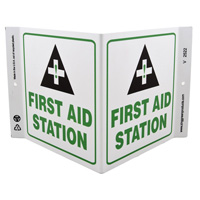| The Home page of ILPI's Safety Data Sheet (SDS) Resource, the leader in SDS information since 1995! | |
| The history and philosophy behind this resource. | |
| A curated collection of books and reference materials concerning Safety Data Sheets and closely related topics. | |
| Paste your plain text SDS into the SDS-Demystifier, and it will be converted into a hypertext-enriched document with links to detailed explanations of each key term. | |
| An extensive list of frequently asked questions about Safety Data Sheets including regulations, content, compliance, and more. | |
| A humorous take on Safety Data Sheet jargon. Fill in the blanks on our entry form to generate a personalized Unsafety Data Sheet to share with your coworkers. | |
| Since 1995, we've maintained this massive curated list of the best places to find Safety Data Sheets on the Internet. | |
| You are here! Way more than a glossary, this hypertext-enhanced resource covers hundreds of SDS-related terms and expert knowledge. Each entry includes both the SDS relevance and links to additional authoritative resources. | |
| Archived results of Safety Data Sheet related polls taken by some of our millions of site visitors | |
| The OSHA regulations behind SDS regulations, including the inspection guidelines and over 400 official interpretations letters under the Hazard Communication Standard | |
| Commercial suppliers of SDS authoring and management software as well as cloud compliance services. | |
| Commercial companies that will create SDS's for your specific needs as well as SDS translation companies. |

Safety signs, banners, and scoreboards? Get yours at Safety Emporium!
Definition
Diuretics cause or increase urine production or urine flow out of the body. Diuretics also decrease extracellular fluid volume. Diuretics regulate urine production by stimulating or inhibiting the body's natural hormones.
Diuresis is increased production of urine by the kidney.
Additional Information

We have all kinds of safety wall signs at Safety Emporium.
Diuretics are used in medicine to treat heart failure, liver cirrhosis, hypertension, and some kidney diseases. Urine contains electrolytes (such as sodium and potassium cations) and metabolic wastes in a watery (aqueous) solution. As the body excretes (expels) more urine, more electrolytes and water diffuse into the blood to replace that lost during urination.
Proper electrolyte balance is essential to good health, and diuretics may cause electrolyte imbalance. The most common electrolyte imbalance, hyponatremia, having too little sodium, can result from the use of diuretics. Hypernatremia, too much sodium, can also be caused by diuretics. Sodium imbalances should be corrected gradually because drastic changes in sodium level can cause brain cell shrinkage and damage to the pons region of the brain.
Diuretics may also cause hypokalemia, abnormally low potassium level. Patients taking diuretics are sometimes given potassium supplements to prevent hypokalemia, but one should only take these on advice of a physician. Special "potassium-sparing" diuretics are available for those on long-term diuretic therapy.
Electrolyte imbalance can be treated with one or more of the following:
- Fluid and water restriction.
- Intravenous (IV) solution.
- Salt tablets.
Diuretics such as ephedra (ma-huang) are sometimes used as a part of weight loss programs. Care should be taken when taking diuretics to avoid dehydration (excessive body water loss) and electrolyte imbalance. See the NIH link on this topic under Further Reading below
Common household diuretics include coffee, alcohol, and cranberry juice.
SDS Relevance
Diuretics can appear in Section 11 (toxicological information) of a Safety Data Sheet as a symptom of exposure as well as Section 4 (first-aid measures).
Some chemicals are diuretics; if ingested, they can cause increased urine production or urine flow. Thiazides and loop diuretics are two common classes of diuretics used in medical treatment.
Diuretics may be used to treat ingestion of small quantities of harmful chemicals, such as thallium and cholecalciferol-based rodenticides.

Help your workers beat dehydration with heat stress prevention signs from Safety Emporium.
Further Reading
- Medical Definition of Diuretic at RxList.
- Fluid Electrolyte Imbalance at the National Institutes of Health's (NIH) Medline.
- Hyponatremia as well as Hypokalemia at WebMD.
- Diuretics (Water Pills) for High Blood Pressure at WebMD.
- Diuretics at Cardiovascular Pharmacology.
- Ephedra and Ephedrine Alkaloids for Weight Loss and Athletic Performance, a fact sheet for health professionals from the National Institutes of Health (NIH).
See also: antidote, concentration, nephrotoxin.